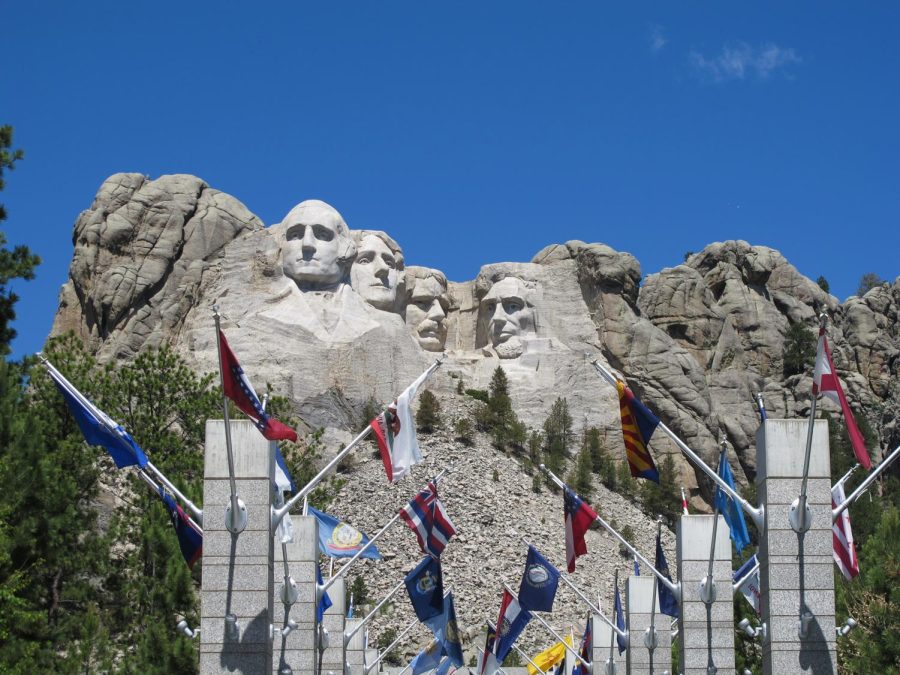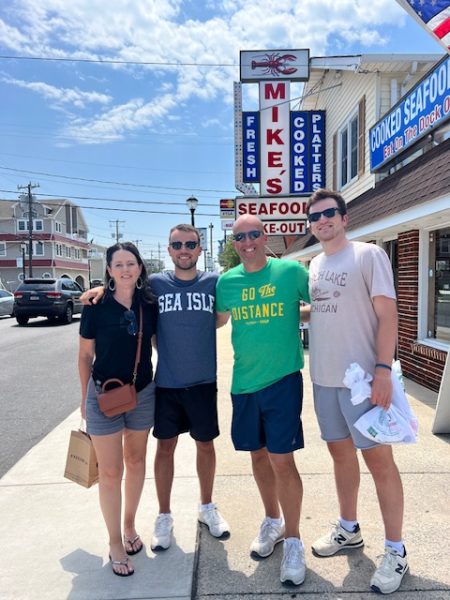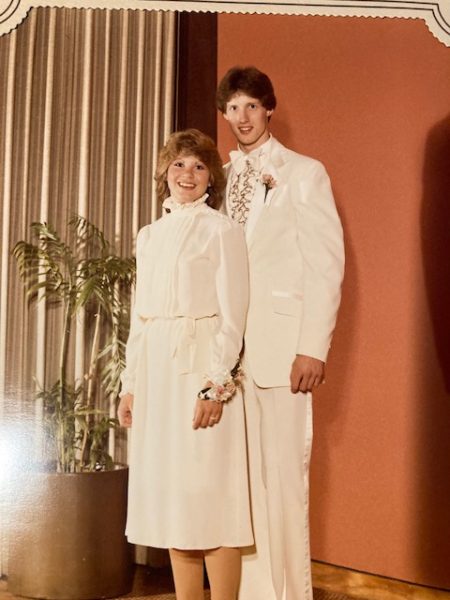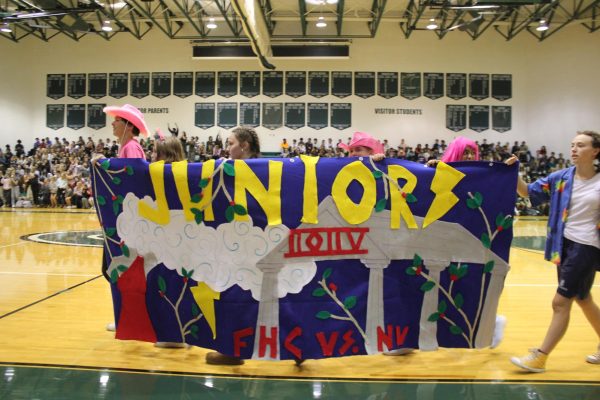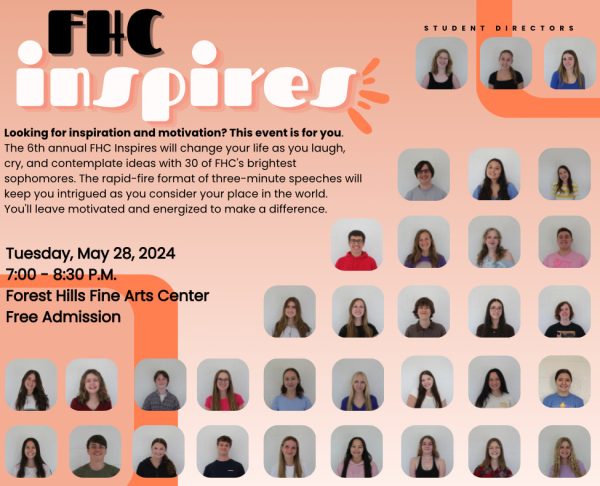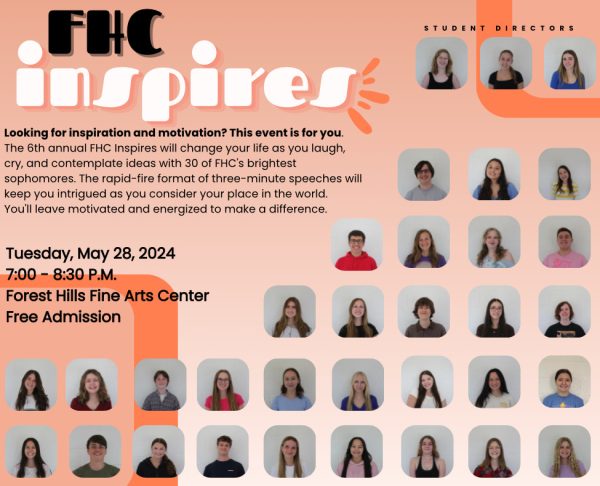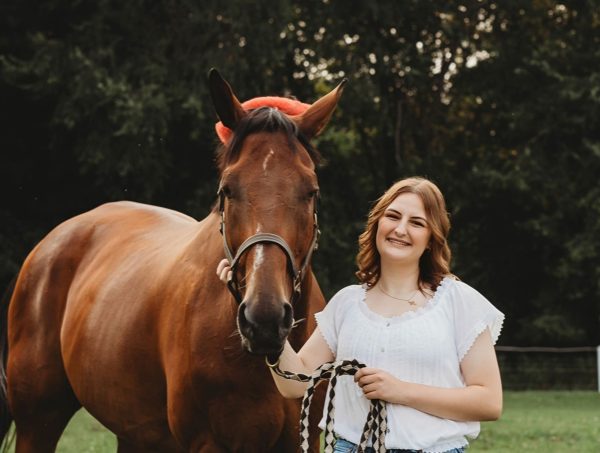Presidents’ Day allows reflection on our nation’s greatest leaders

More stories from Lauren Brace
Mount Rushmore: the famous national memorial depicting the presidents George Washington, Thomas Jefferson, Theodore Roosevelt, and Abraham Lincoln
Did you know that the expression “OK” is credited to Martin Van Buren’s presidential campaign? Or did you know that the White House wasn’t referred to by that name until Theodore Roosevelt deemed it so? These fun facts about presidents can provide the perfect conversation topics for Presidents’ Day on February 21st.
“I found out while studying that Zachary Taylor, one of the 8 presidents to die in office, managed to do so by eating too many cherries,” senior Stevie Wolf, one of FHC’s history fanatics, said. “I don’t know exactly how you go about it, but I feel like that should go up there with Taft needing a massive bathtub.”
Interesting and sometimes absurd presidential tidbits such as these are perfect for initially drawing students into history. Even Presidents’ Day itself is another one of these intriguing verities; originally named “Washington’s Birthday,” the new overarching title now celebrates the combination of all presidents who served in the White House, but namely Lincoln and Washington—two of the most influential leaders who happen to share the birthday month of February.
The day that we celebrate Washington’s birthday isn’t even the former president’s birthday at all, for prior to the switch to the Gregorian calendar, Washington celebrated his birthday on February 11th. Furthermore, President Richard Nixon was the one who signed to celebrate on the third Monday of every February in an effort to have more three-day holiday weekends.
Nonetheless, it serves as a reminder of the triumphs and downfalls of preceding U.S. presidents and provides an opportunity to understand the broader context of the past. For Stevie, these are the elements that fascinate him within the topic.
“I started with an interest in small areas,” Stevie said, “but quickly found out that in order to understand the small picture, you first must understand the big picture. Well, that big picture led me to a sound understanding of history post-1870. I find it fascinating to see the development of humanity just because of how flawed it has been and will be—an imperfect attempt at creating a better world.”
By analyzing history through this closer lens, the cause-and-effect patterns that have shaped the nation we live in today become evident. The driving force behind these events has most often come from the resilience of leaders in response to the obstacles thrown their way. Stevie has been inspired by the United States’ 44th president, Barack Obama, and his confidence in leading the nation.
“[Obama] was pretty good at working with the people of the U.S. and those abroad, while working to help the American people as a whole,” Stevie said. “We’ve had a lot of no-name presidents or controversial presidents, but he was pretty well known and not hated by all that many. A good leader should be able to unite folk, not alienate them.”
Especially for younger generations, the president is one of the primary sources of leadership guidance. History teacher Steve Labenz encourages his students to find the importance in the history behind every figurehead and learn from not only their achievements, but also their mistakes. In regards to presidents, Labenz has always admired the contributions of Theodore Roosevelt.
It’s not just about enjoying history, but it’s about understanding what you want your country in the world to be.
— Steve Labenz
“Teddy Roosevelt was such a transformative president and person,” Labenz said. “He also governed in a way that he felt was fair; he had an overdeveloped sense of right and wrong, and he stuck to those things. He was a force that changed what the presidency is—a strong president rather than being guided by Congress.”
As evident from Roosevelt’s leadership, the ability to stay true to core values rather than being swayed by the public is one of the most powerful traits a leader can have. Intrigued by Roosevelt’s caring personality, athleticism, and love for the outdoors, fellow history teacher Brad Anderson joins Labenz in the Roosevelt fan club.
“[Teddy Roosevelt] was this guy who was very authentic,” Anderson said. “He would never ask anything of his workers that he wouldn’t do himself. He preached the strenuous life, but he also lived it. He was a great leader for the times, and I personally believe that the time is right for a similar figure in our politics. Teddy Roosevelt brought people together, and people liked him even if they disagreed with him.”
Finding inspiration and a connection with the former president, Anderson incorporates some of Roosevelt’s values into his lesson plans. The multitude of qualities that shaped all of the United States’ former presidents is a representation of the gumption required to successfully lead.
Nobody cares how much you know until they know how much you care.
— Theodore Roosevelt
However, while there are many praises to deliver to these past presidents, it’s important to acknowledge their lesser qualities as well. No one is perfect, and of course, there are many mistakes that can be learned from today. But for Presidents’ Day candidates Washington and Lincoln, it can be argued that their triumphs far outweigh their tragedies.
“These leaders did have flaws,” Anderson said. “They did; they were flawed human beings who did as best they could with the time that they had, and in the context of their times, they did remarkable things. It’s hard to judge leaders through the lens of the modern era. If we did that, every leader of the past would have something wrong that we could nitpick.”
No matter the outcome of a presidency, governing a country is the largest undertaking a person could make. Their actions and sacrifices should be appreciated as each leader did their best to improve their nation with the resources they were given.
On Presidents’ Day, looking back on the past provides important information to use in the future. Questioning someone’s past and the qualities earned along the way is an essential process to take part in as each person gets a say in who continues to pave the way for success.
“All personality helps define who a president is, who they are, and what they bring to the office,” Labenz said. “I think that’s always important as [students] become voters—to look at the person and see if their background has prepared them for this. What kind of president are they going to be? Are they going to be more like a Teddy Roosevelt, or are they going to be more like an Andrew Johnson?”

Lauren is a senior entering her final year on The Central Trend as Podcast Manager. She has a strong passion for every extracurricular she's involved in,...





















































































